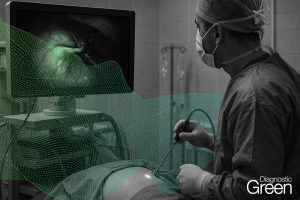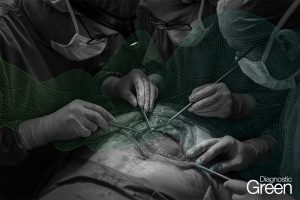Laparoscopic anatomical liver resection is a standard treatment for liver cancer. Segmental resection of S4/5/7/8 is complex and lacks standardized procedures, leading to common complications. Innovative techniques are essential for enhancing safety and outcomes. A 45-year-old male with a history of hepatitis B, Child-Pugh Class A liver function, performance status (PS) score 0, and alpha-fetoprotein (AFP) level of 198.3 ng/mL was diagnosed with a 4 cm × 5 cm × 5 cm mass in S4/7/8, indicating primary hepatocellular carcinoma (HCC), closely associated with the middle and right hepatic veins (BCLC A). The 15-min retention rate of indocyanine green (ICG) was 7.8%. The standard liver volume (SLV) was 1073 mL, and the actual liver volume was 1345 mL.
We performed laparoscopic resection of segments S4/5/8 and partial S7, resecting the middle hepatic vein (MHV) while preserving the right hepatic vein (RHV) because MHV was so closed with the tumor. The future liver remnant (FLR) was 590 mL, with an FLR/SLV ratio of 55%. The surgical procedure utilized Takasaki’s approach to block the right anterior hepatic pedicle and fluorescence staining to identify the transection line. The operation lasted 205 min with an estimated blood loss of 150 mL. The patient experienced no postoperative complications and was discharged on the sixth day. Histopathology confirmed hepatocellular carcinoma with clear resection margins.
Takasaki’s approach, combined with ICG fluorescence navigation, significantly improves laparoscopic anatomical hepatectomy. This technique enhances visualization, reduces complications, and offers a new standard for complex liver resections.




